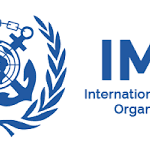HAVANA: A powerful earthquake with a magnitude of 6.8 struck eastern Cuba on Sunday, shaking buildings in Santiago de Cuba, the island’s second-largest city, as well as surrounding areas. The quake, which hit Granma province on Cuba’s southeastern coast, was centered near the municipality of Bartolome Maso, a location historically significant as the site of former leader Fidel Castro’s headquarters during the Cuban Revolution.
According to the U.S. Geological Survey (USGS), the earthquake occurred at a depth of 14 km (8.7 miles). Initially measured at a magnitude of 5.8, the tremor was later revised upward.
Residents in the affected area described the quake as one of the strongest they had ever experienced, with buildings shaking violently and dishes rattling off shelves. Some structural damage was reported in Pilon, near the epicenter, and many of the region’s older homes and buildings, which are more vulnerable to seismic activity, were affected.
The U.S. National Tsunami Warning Center stated there was no tsunami threat associated with the earthquake.
The quake comes amid a series of natural disasters that have recently impacted Cuba. The eastern region of the island was devastated by Hurricane Oscar in October, and just last week, Hurricane Rafael knocked out the national power grid, leaving 10 million people without electricity. Recovery efforts are ongoing, with rolling blackouts still affecting much of eastern Cuba, complicating communication in the region.
Most of Cuba’s seismic activity occurs in the area around Santiago, which lies along a fault line that marks the boundary between the North American and Caribbean tectonic plates, according to Cuba’s seismic service.
The Cuban capital, Havana, was not affected by the earthquake.






